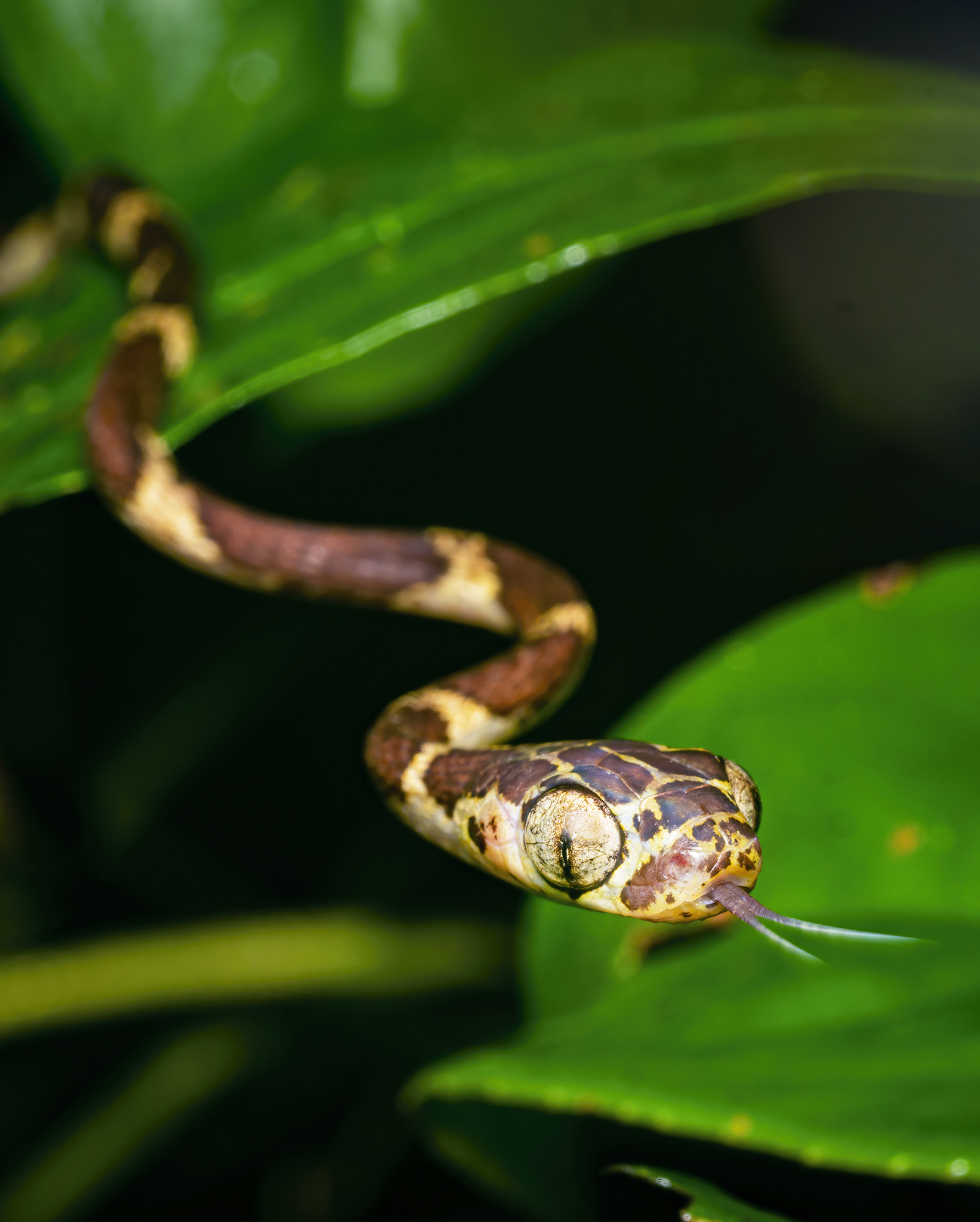*blep*
This is the Blunt-Headed Tree Snake, which is an awful name for such an adorable little noodle.
Googly-Eyed Slim Snake, Big-Brained Climber, Ceaselessly Surprised Slitherer. Take your pick. Give the poor guy a break.
According to Wikipedia, this snake’s eyes make up approximately 26% of its head, which is a fantastic animal fact. But I have several follow-up questions. Are we talking in terms of surface area or mass here? Who are the scientists going around measuring the eye-to-head ratio of snakes? How do I apply for this job? Also, 26 is an awfully precise number to be preceded by the word ‘approximately’, surely you’d go for ‘about a quarter of its head’ unless you’d really taken the time to get those measurements spot on.
The worst part is that the line doesn’t even have a reference attached to it. Some random bloke has probably just looked at one of these snakes and gone, “yeah, 26% seems about right to me”.
Anyway, thanks for coming to the latest rant in my love-hate relationship with Wikipedia. It’s definitely one of my favourite things on the internet, but I still hate it approximately 26% of the time.

Sorry, got a little side-tracked there. The rest of this post will be 100% cold hard snake facts. I promise.
Blunt-Headed Tree Snakes are mildly venomous rear-fanged snakes that can be found throughout the jungles of South and Central America. While most snakes rely on scent and vibration to detect prey, the Blunt-Headed Tree Snake uses its preposterously prominent peepers in order to seek out a meal. They hunt at night, and typical targets are lizards, frogs, and a range of eggs.

These snakes have a polygynandrous mating style, which in scientific terms means that they know how to get it on. Both males and females will have multiple mating partners during their breeding period, and in certain habitats, that breeding period is always. They also know that kids can get in the way, so Blunt-Headed Tree Snakes demonstrate no parental care traits whatsoever. The female will leave immediately after laying her eggs, presumably to go and find another hot new snake.
Interestingly, female Blunt-Headed Tree Snakes have larger heads than the males. I’m not sure what the evolutionary purpose of this is, but I can only assume it probably has something to do with attracting the best mates during the aforementioned snake sex extravaganza.
Anyway, I hope you enjoyed learning about the sex lives of Blunt-Headed Tree Snakes. Be sure to let us know whether you would like more or less animal sex facts in future posts – I have no idea how weird you all are.
–
Common Blunt-Headed Tree Snake (Imantodes cenchoa), Kawsay Biological Station, Peru


